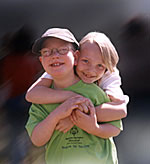The Demographic and Behavioral Sciences Branch (DBSB) supports research on population health and research that looks at the linkages between demographic and social processes and health outcomes at the individual and population level.
The program in health research encompasses four broad goals to:
- Study the intersection of demographic processes and health;
- Study health from a population perspective;
- Apply a life course approach to research on health; and
- Support the integration of social science, behavioral, and biomedical approaches to understanding health.
The program adopts a broad definition of health, to include not only the absence of specific diseases or disabilities but also positive aspects such as effective functioning and overall well-being. Health is seen as a developmental process: health at a particular point in time is a function of prior history as well as the effects of current experiences and capacities.
Specific topics related to demographic processes and health include the following:
- Mortality;
- Interrelationships between fertility and fecundity and health and between assisted reproductive technologies and health;
- Immigrant health;
- Health as related to geographic mobility and spatial distribution;
- Interrelationships between family/household formation, processes, and dissolution and health;
- Relationship between human capital, education, and labor force participation and health, and economic development and health;
- Relationship of population composition (e.g., income inequality, racial/ethnic composition, age/sex composition) and health;
- Endogenous/exogenous effects of mortality and morbidity on status attainment; and
- Intergenerational effects of health.
A population perspective on health includes topics such as:
- Basic research on the health of populations, trends in population health, and differences in health across populations (e.g., health disparities);
- Methodological research relating to the measurement and analysis of health status at the aggregate level, changes in health over time, and the spatial distribution of health problems; and
- Research on the effects of policies and other population-level interventions on health.
A life course approach to health includes topics such as:
- Mortality and health from conception through the reproductive years, including infant mortality, low birth weight, child and adolescent health, reproductive and sexual health.
- od/contextual effects).
- Descriptive research on the health status of populations from birth through middle age
- Research that examines the efficacy of early intervention programs on health outcomes in adulthood.
Examples of integrated approaches to understanding health include:
- Research that integrates social science, behavioral, and biomedical theories and methodologies (including but not limited to the collection of biomarkers) in studying the etiology and management of health;
- Research that examines the role of the social, economic, political, institutional (e.g., health service, school), cultural, and physical environments on health over the life course; and
- Research that examines health in the context of nested influences (e.g., family, neighborhood, economic market, community, nation).
Some aspects of the mission and goals described above are shared with other institutes and other Branches within NICHD. Typically, applications dealing with specific disease outcomes are assigned to the Institute responsible for those outcomes. Applications dealing with health broadly are of interest to both NICHD and the National Institute on Aging. Within NICHD, the DBS Branch has special interest in applications that focus on health at a population level, relate health outcomes to demographic processes, or rely primarily on social science methodologies.
For information on related initiatives, visit:
Contact: Mike Spittel
1 DBSB defines "population" as the aggregate collection of individuals in a defined geographic area and/or social or demographic group. Examples include the residents of New York City, married people in the United States, and African American children younger than 5 years of age. Aggregates defined by their participation in a study, program, or service are not considered populations under this definition.